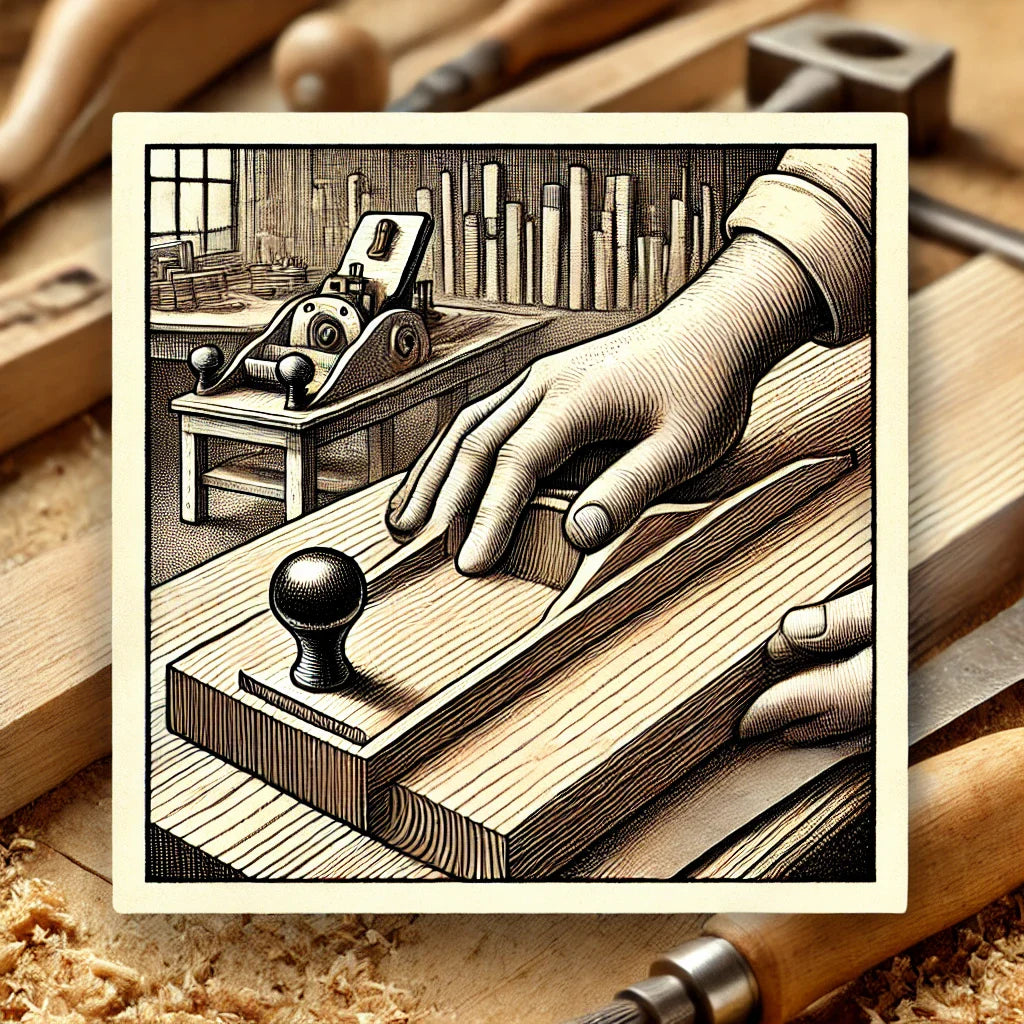
A Few Steps to Reduce or Eliminate Snipe
Snipe is definitely frustrating. Snipe occurs when the board gets pushed down at the beginning or end of the feed rollers, causing those areas to be planed thinner than the rest of the board. Here are a few things to check and try to help reduce or eliminate the snipe:
1. Check the Roller Height and Pressure
Ensure that the infeed and outfeed rollers are adjusted properly. If they're too high or low, or if the pressure on them isn't even, it could cause uneven feeding, leading to snipe. Make sure they're both parallel to the bed and properly adjusted for the thickness of the material you're planing.
2. Infeed and Outfeed Tables
The infeed and outfeed tables should be level with the cutterhead when the board enters and exits the machine. If either of these tables is too high or low, it can cause the board to dip or rise at the edges, resulting in snipe. Check to make sure they're properly aligned and supported.
Some planners can have slightly out-of-plane tables due to wear or rough handling. You can use a level or straightedge to check alignment.
3. Board Support at Entry and Exit
When feeding boards through, ensure that the board is being fed in straight and not being pushed down at the beginning or pulled up at the end. This can be more noticeable with longer boards, especially when there's a gap at the beginning or end of the cut.
Consider using a roller stand or additional support at both ends of the board to help maintain a smooth, even feeding angle throughout the cut.
4. Speed and Feed Rate
If you're trying to feed boards through too quickly, the rollers might not be able to keep the material flat, leading to snipe. Try slowing down the feed rate and see if that improves the result.
5. Board Quality
If the boards are warped or cupped, the uneven pressure on the infeed and outfeed rollers can cause snipe. Try to ensure the boards are as flat as possible before running them through the planer. This is especially important for longer boards where any warp or twist can exacerbate snipe.
6. End of Board Feeder Support
If the board is not supported adequately on the outfeed side as it exits the planer, it can cause the board to drop or flex at the end, leading to snipe. Make sure the outfeed area is level and that you're not allowing the board to fall or dip at the end.
7. Take Lighter Passes
If you're taking too heavy of a pass, the board may not be held in place as evenly, especially at the ends. Try reducing the depth of cut slightly to see if that helps reduce snipe.
1. Check the Roller Height and Pressure
Ensure that the infeed and outfeed rollers are adjusted properly. If they're too high or low, or if the pressure on them isn't even, it could cause uneven feeding, leading to snipe. Make sure they're both parallel to the bed and properly adjusted for the thickness of the material you're planing.
2. Infeed and Outfeed Tables
The infeed and outfeed tables should be level with the cutterhead when the board enters and exits the machine. If either of these tables is too high or low, it can cause the board to dip or rise at the edges, resulting in snipe. Check to make sure they're properly aligned and supported.
Some planners can have slightly out-of-plane tables due to wear or rough handling. You can use a level or straightedge to check alignment.
3. Board Support at Entry and Exit
When feeding boards through, ensure that the board is being fed in straight and not being pushed down at the beginning or pulled up at the end. This can be more noticeable with longer boards, especially when there's a gap at the beginning or end of the cut.
Consider using a roller stand or additional support at both ends of the board to help maintain a smooth, even feeding angle throughout the cut.
4. Speed and Feed Rate
If you're trying to feed boards through too quickly, the rollers might not be able to keep the material flat, leading to snipe. Try slowing down the feed rate and see if that improves the result.
5. Board Quality
If the boards are warped or cupped, the uneven pressure on the infeed and outfeed rollers can cause snipe. Try to ensure the boards are as flat as possible before running them through the planer. This is especially important for longer boards where any warp or twist can exacerbate snipe.
6. End of Board Feeder Support
If the board is not supported adequately on the outfeed side as it exits the planer, it can cause the board to drop or flex at the end, leading to snipe. Make sure the outfeed area is level and that you're not allowing the board to fall or dip at the end.
7. Take Lighter Passes
If you're taking too heavy of a pass, the board may not be held in place as evenly, especially at the ends. Try reducing the depth of cut slightly to see if that helps reduce snipe.

Leave a comment